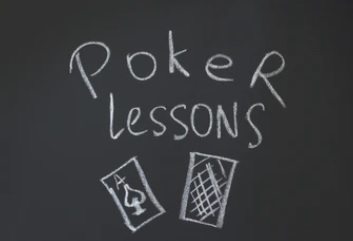This is the first in a series of articles about building a practical understanding of game theory regarding poker. Game theory is a branch of mathematics that can be used to model and evaluate certain types of games. Poker is a natural target for this kind of thing, but the math involved can get tricky, so we’re going to take a more practical approach instead of just jumping into things like you would in a math textbook. It might take you some time to wrap your head around some of the ideas in this series, but it will definitely help your understanding of the game if you do.
Attack and Exploitation
Exploitation is a topic that is not well understood by newer players, but it’s where we’re going to start, so here we go. If an opponent is doing something “too much,” then you have a natural way to take advantage of it, and you exploit their tendency in the process. For example, if someone is folding to 3-bets of a normal size before the flop 90 percent of the time, then you could exploit them with 3-bet bluffs. Bluffing is one of the easier topics to cover with game theory in poker as far as building an understanding of it goes, and that’s why we’ll use it in many examples.
You can think of exploitation as having two parts. The first part is a weakness that your opponent shows, and this means that they’re either taking an action too often or not often enough. The second part is the process of attacking that weakness. As with the folding example, if someone is folding much too often, then that can be easily exploited with bluff. However, just realize that if they aren’t folding enough, then you can exploit them in the opposite directions with value bets.
It’s worth pointing out that being able to identify weaknesses in your opponents’ strategies is the cornerstone of making game theory work for you.
Defense and Balance
If you want to avoid being attacked, then you have two options. If you expose weaknesses that your opponent will not notice or attack, then you are safe for the time being, so your first option is to selectively choose which weaknesses you give out. On the other hand, you have the second option which is to play balanced strategies that don’t give off many weaknesses to begin with. Each of these approaches have their pros and cons, and they are tied into the balance of attack and defense.
The Nature of Attacking in Poker
When you attack someone in poker by pounding on one of their weaknesses, then you create your own weakness. By definition, the act of exploiting someone opens you up to being exploited. In this way, you have to be careful about exploiting an opponent to such a degree that they are able to quickly figure out what you’re doing and counter by attacking you in return.
Consider the 3-betting example above. Suppose some late position player is open-raising with a wide range and then folding 90 percent to a normal-sized 3-bet. This is so often that it would be easy to exploit this player with 3-bet bluffs. However, if you were to attack this player by 3-betting with 50 percent of all hands, then it would almost immediately become obvious what you were doing. Your opponent would realize what you were doing, and they would adjust. One part of this adjustment would be covering up the weakness that you were attacking, and another part would be attacking the new weakness that you created by 3-betting too often.
The Balance of Attack and Defense
In this way, you have to attack with somewhat measured strokes. You can’t just crank up your bluffing rates to some absurd amount without opening yourself up to more and more risk. Considering this risk and evaluating how it plays out over the long run is a pretty big deal. Let’s look at two common examples of how to manage this risk.
Consider this first example: You’re a regular at your stakes, and you run up against another regular who has a very particular weakness that comes up in hands several times per session. If you exploit this player to an exceptional degree, then they are going to be much more likely to figure out what’s going on and correct their play against you. You’ll be able to milk this weakness by exploiting them over the short term only. On the other hand, if you exploit them to a more moderate degree, then you’ll be able to keep exploiting the same weaknesses for quite a while in future sessions, and you’ll make more money in the process.
For our second example, suppose we’re a regular at our stakes and we’re playing against someone who we have never seen before. They buy in for a stack that isn’t the full size, they don’t automatically reload, and they play fairly poorly. Against this player, chances are they won’t be around very long, so you could exploit their weaknesses to a large degree since you aren’t losing so much in future games if they notice. The key here is that this player isn’t likely to be in games with you nearly as often. What’s more is that, because this player isn’t very skilled, he or she will be less likely to notice that you’re attacking their weaknesses in the first place.
The Abstract Approach
You’ll notice that this discussion has been a bit more abstract than a lot of the math-based material that I’ve churned out with this column. In future installments of this series, we’re going to get a little more concrete while still keeping things as practical as possible. Study this piece as best you can, and get ready for next week’s material.
Submit your review | |








